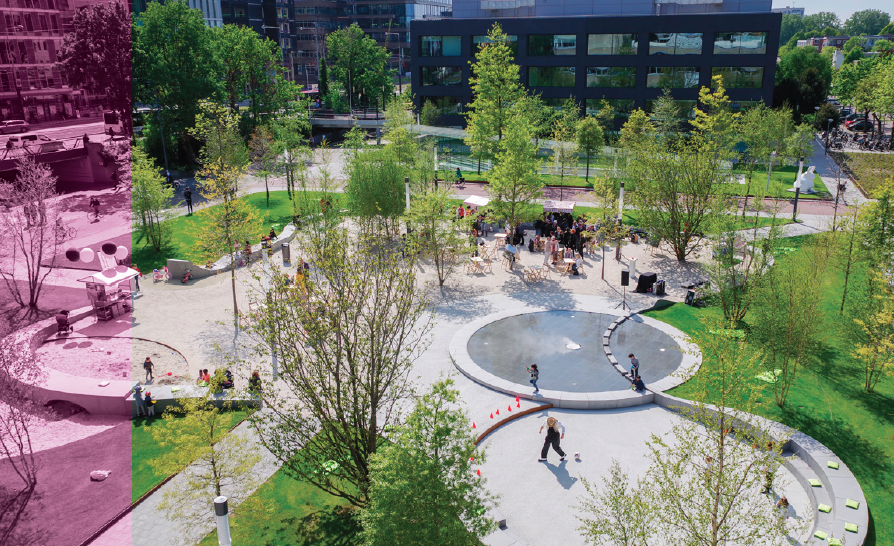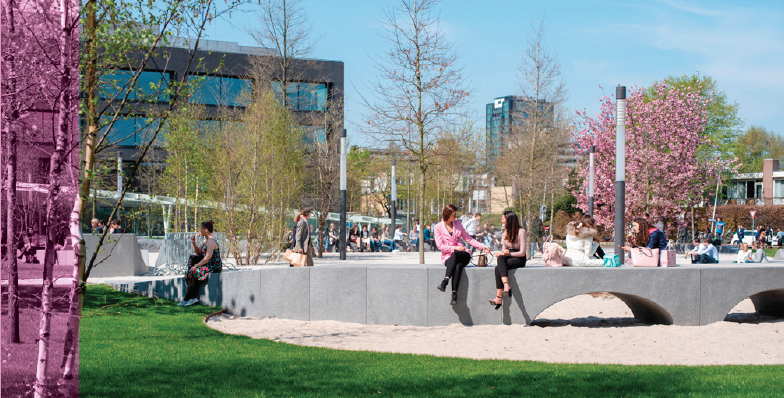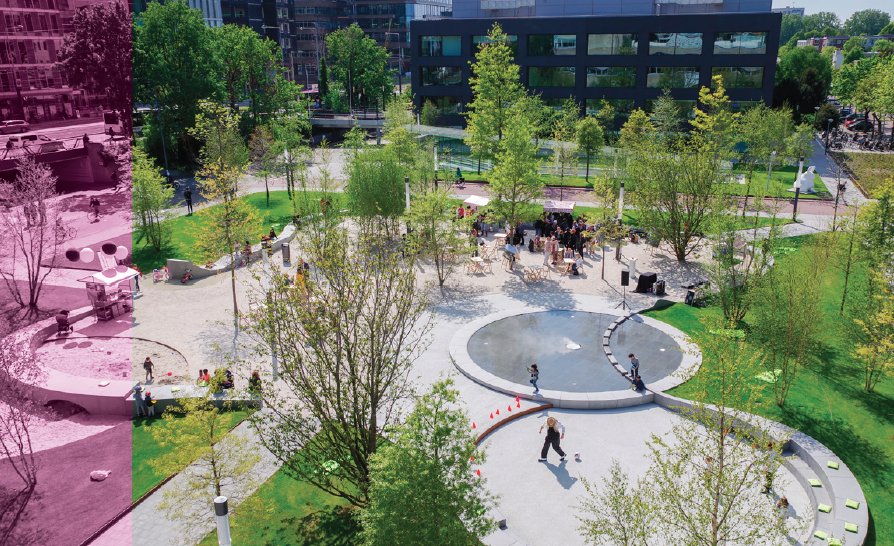ZUIDAS: MIXED-USE URBAN COMMUNITY IN AMSTERDAM
The housing shortage in the Netherlands has long been a pressing issue. That’s especially true in Amsterdam, which is hard at work to build enough affordable and sustainable homes, also in Zuidas. This process is transforming Zuidas from a location known mostly as a business district to a mixed-use urban community in Amsterdam. Reina van Grondelle, the municipality’s principal urban planner for Zuidas, explains why residential development is so vital for this area, and how it boosts local quality of life.

Living in Zuidas
Between now and 2025, some 1,700 new homes will be built in Zuidas, with another 6,000 to follow in the years immediately after 2025. This will bring the total number of homes in Zuidas to nearly 10,000. Most will be concentrated in Ravel, the Knowledge Quarter and Verdi, forming mixed neighbourhoods with offices and amenities. Overall, 40% of this housing stock will be social rentals, 40% mid-range and 20% private sector housing. Offering a diverse range of residential options is a must for every neighbourhood in Amsterdam, stresses Reina van Grondelle. “We’re shaping communities that fit with Amsterdam’s tradition of mixed neighbourhoods. Everyone in Amsterdam should be able to live in Zuidas, regardless of income, education, age or household composition. That’s why it is so important that the municipality is making space for social and mid-range rental as well as private sector housing.”
Interesting and dynamic
There is a persistent idea that Zuidas wasn’t originally planned to be a mixeduse urban district. But that’s not true: “The first Master Plan for Zuidas drafted in 1998 already provided for a mixed programme of residential units, with a share for lower incomes, plus workplaces and amenities. This premise never changed. In addition to social rental housing, the 2016 Vision for Zuidas also provided for mid-range units.” According to Reina, a mixed city has places that are used by a wide range of people for a variety of reasons and at different times, creating an interesting and dynamic urban space. “Balancing crowded and quiet spaces are also always part of that. A good illustration is Prinses Amaliaplein (Vijfhoek), where you’ve got children playing, passengers waiting for buses and office workers on their lunch breaks all creating a pleasant buzz.” Residents play a key role in the development of Zuidas, she adds. “They feel attached to their homes and add colour to the neighbourhood. We’re pleased with the pace at which housing production is progressing in Zuidas now.”

Part of the city
Access to enough amenities nearby is a factor that can make or break an urban residential location, Reina knows. Residents of Zuidas can find a growing range of essentials in their own neighbourhood, but there is still much to be gained. “We are working hard on a full range of amenities, with shops, restaurants, schools, care facilities and cultural venues. To give an example, in the second half of 2022, the conservatory is opening a satellite in the historic Kapel & Convict buildings in Beatrixpark.” Zuidas has undergone tremendous development since the first plans were laid for this district. “Creating whole new urban districts is a long process, but ultimately Zuidas should become a natural and integral part of the city of Amsterdam; physically linked to the surrounding area, connected to the residents and users of adjacent neighbourhoods, and with the hub around Amsterdam Zuid station forming one of the city’s main new centres.”
